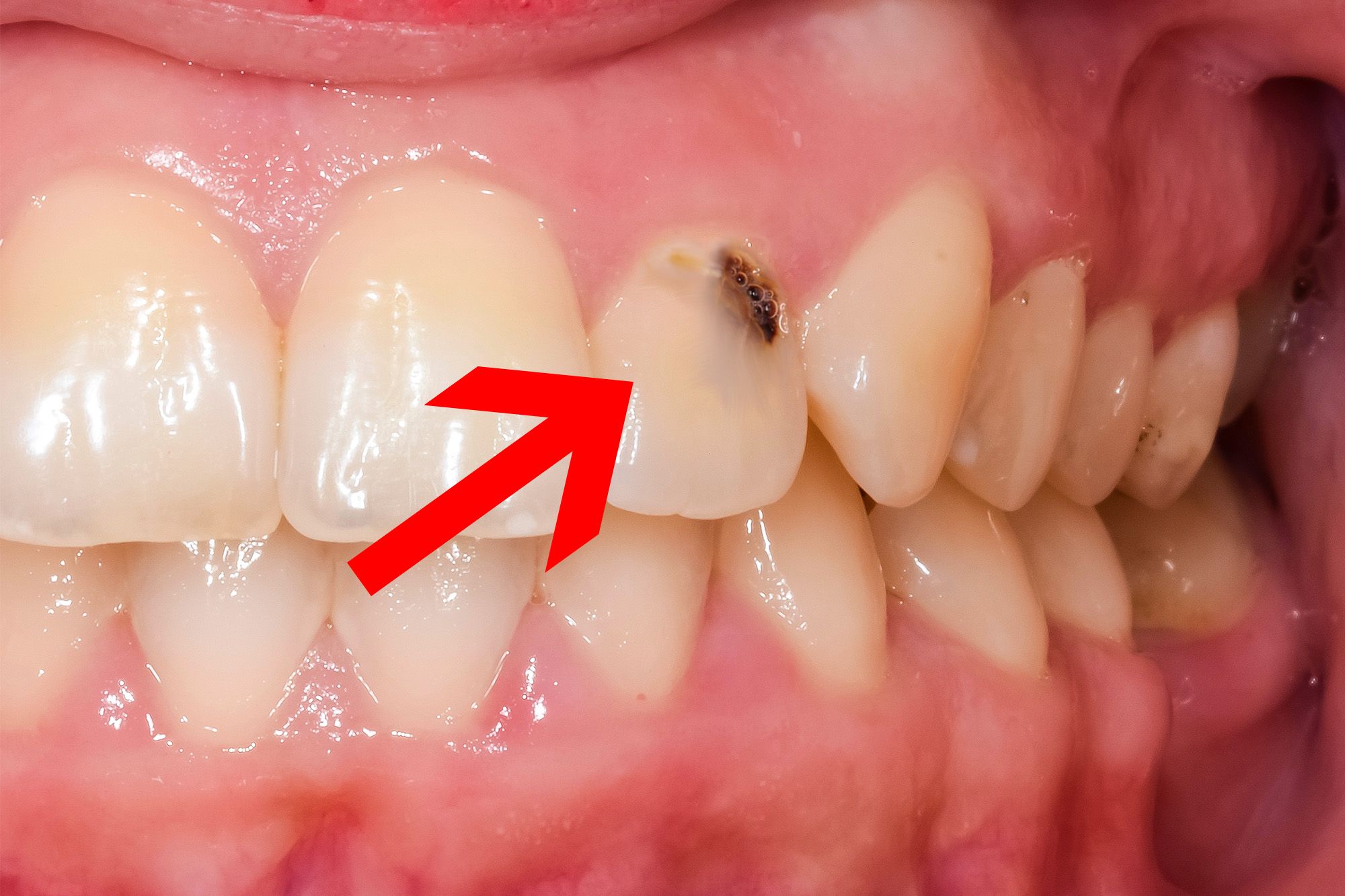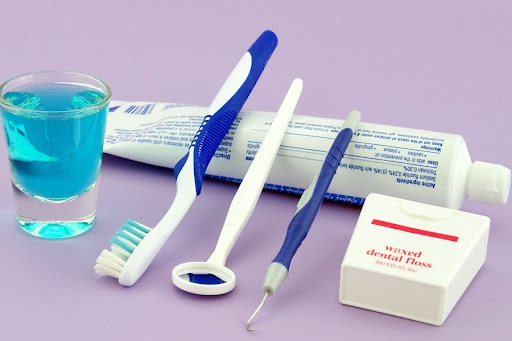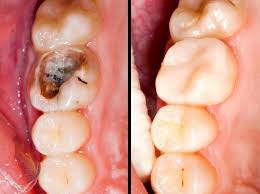cavity in front teeth

A bright, confident smile is something everyone desires, but cavities in front teeth can pose a significant threat to that perfect grin. When we think of cavities, we often imagine them hiding away in the back molars, but front teeth are just as susceptible. A cavity in front teeth can be particularly concerning because it’s not only about dental health—it also impacts your appearance and self-confidence. In this comprehensive guide, we’ll explore what causes cavities in front teeth, how they can be treated, and, most importantly, how to prevent them.
Understanding Cavities
Before diving into the specifics of cavities in front teeth, it’s important to understand what a cavity is. A cavity is a hole in the tooth that forms due to tooth decay. Tooth decay occurs when the enamel—the hard outer surface of the tooth—breaks down due to the acids produced by bacteria in the mouth. These acids are typically a byproduct of the bacteria feeding on sugars and starches left on the teeth after eating.
Cavities can occur on any tooth surface, but when they appear on the front teeth, they become a more visible concern. The front teeth, known as incisors and canines, are crucial for biting and cutting food and play a significant role in your overall appearance.

Causes of Cavities in Front Teeth
Cavities in front teeth can develop due to various factors, many of which are the same as those that cause cavities in other teeth. However, certain habits and conditions can make the front teeth particularly vulnerable.
1. Poor Oral Hygiene
Poor oral hygiene is the most common cause of cavities in front teeth. Failing to brush and floss regularly allows plaque—a sticky film of bacteria—to build up on the teeth. When plaque isn’t removed, it hardens into tartar, which harbors bacteria that produce acids. This leads to the breakdown of enamel and the formation of cavities.
2. High Sugar and Starch Diet
A diet high in sugars and starches significantly increases the risk of cavities. Sugary foods and drinks fuel the bacteria in your mouth, which produce acid as a byproduct. This acid erodes the enamel, especially on the front teeth, which are constantly exposed when eating or drinking.
3. Acidic Foods and Beverages
Consuming acidic foods and drinks, such as citrus fruits, soda, and wine, can weaken the enamel on your front teeth. The acid in these substances softens the enamel, making it more susceptible to decay.
4. Lack of Fluoride
Fluoride is a mineral that strengthens tooth enamel and helps prevent cavities. If your water supply lacks fluoride or doesn’t use fluoride toothpaste, your front teeth may be more prone to developing cavities.
5. Dry Mouth (Xerostomia)
Saliva is critical in protecting your teeth by washing away food particles and neutralizing acids in the mouth. If you suffer from dry mouth due to medication, medical conditions, or other factors, you may be at a higher risk of developing cavities in your front teeth.
6. Gum Recession
As gums recede, the roots of the teeth become exposed. The roots don’t have the same protective enamel as the crown of the tooth, making them more vulnerable to decay. This can lead to cavities forming on the front teeth near the gumline.
7. Oral Piercings
Piercings in the tongue or lips can constantly rub against the front teeth, wearing down the enamel and leading to cavities. Additionally, piercings can harbour bacteria, increasing the risk of infection and decay.
8. Trauma to the Teeth
Injuries to the front teeth, whether from sports, accidents, or other trauma, can cause cracks or chips in the enamel. These openings allow bacteria to enter the tooth and start the decay process.

Symptoms of Cavities in Front Teeth
Cavities in front teeth can sometimes be tricky to spot in their early stages, but there are several symptoms to watch out for:
1. Visible Discoloration
One of the most noticeable signs of a cavity in a front tooth is discoloration. You might see a white spot that indicates the beginning stages of decay. As the cavity progresses, it can turn brown or black.
2. Sensitivity
Teeth with cavities often become sensitive to hot, cold, or sweet foods and drinks. If you notice a sharp pain or discomfort when consuming certain foods, it could be a sign of a cavity in one of your front teeth.
3. Pain
A persistent toothache, particularly when biting or chewing, is a more advanced sign of a cavity. This pain occurs because the decay has reached the dentin—the layer beneath the enamel—or even the pulp, where the tooth’s nerves and blood vessels are located.
4. Rough or Pitted Surface
You may feel a rough or pitted surface on your front teeth, which could indicate the presence of a cavity. This is more noticeable if you run your tongue over the tooth.
5. Bad Breath
Cavities can harbour bacteria that produce unpleasant odours, leading to persistent bad breath (halitosis). If brushing and mouthwash don’t seem to help, it could be due to a cavity in your front teeth.
Treatment Options for Cavities in Front Teeth
If you suspect a cavity in one of your front teeth, visiting your dentist as soon as possible is important. The sooner a cavity is treated, the better the outcome for your dental health and appearance.
1. Dental Fillings
A dental filling is the most common treatment for cavities, including those in front teeth. During this procedure, your dentist will remove the decayed portion of the tooth and fill the space with a material such as composite resin, which is tooth-coloured and blends in with the natural tooth.
2. Dental Bonding
For cavities in the front teeth, dental bonding is often used. This involves applying a tooth-colored resin to the affected area, which is then shaped and polished to match the surrounding teeth. Bonding is a great option for small to moderate cavities and offers an aesthetically pleasing result.
3. Veneers
Sometimes, a dentist might recommend veneers to cover a tooth with a cavity. Veneers are thin shells made of porcelain or composite resin bonded to the tooth’s front surface. They not only cover the cavity but also enhance the overall appearance of the tooth.
4. Root Canal Therapy
If the cavity has progressed to the point where the tooth’s pulp is infected, a root canal may be necessary. During a root canal, the dentist removes the infected pulp, cleans the inside of the tooth, and seals it with a filling. Afterwards, a crown or veneer may be placed on the tooth for aesthetic protection.
5. Crowns
A crown may be required in more severe cases where the tooth’s structure is significantly compromised. A crown is a cap that covers the entire tooth, providing strength and protection. Crowns are often made of porcelain, ceramic, or resin and can be matched to the color of your natural teeth.
Prevention of Cavities in Front Teeth
Preventing cavities in your front teeth is always better than treating them. Here are some effective strategies for keeping your front teeth healthy and cavity-free.
1. Maintain Good Oral Hygiene
Brush your teeth at least twice a day using fluoride toothpaste and a soft-bristled toothbrush. Make sure to brush all surfaces of your teeth, including the front, back, and chewing surfaces. Floss daily to remove plaque and food particles from between your teeth.
2. Limit Sugary and Acidic Foods
Reducing your intake of sugary and acidic foods and beverages can significantly lower your risk of cavities. If you do consume these items, try to rinse your mouth with water afterwards to help neutralize the acids.
3. Use Fluoride Products
Fluoride strengthens the enamel and helps prevent cavities. In addition to using fluoride toothpaste, consider using a fluoride mouthwash and drinking fluoridated water.
4. Regular Dental Checkups
Visiting your dentist regularly (every six months) for checkups and cleanings is essential for maintaining good oral health. Your dentist can detect early signs of decay and provide treatments to prevent cavities from progressing.
5. Consider Dental Sealants
Dental sealants are a protective coating applied to the chewing surfaces of the teeth to prevent cavities. While they are more commonly used on molars, some dentists may recommend sealants for front teeth if they are at high risk of decay.
6. Stay Hydrated
Drinking plenty of water helps wash away food particles and bacteria, reducing the risk of cavities. It also helps maintain saliva production, which protects your teeth.
7. Chew Sugar-Free Gum
Chewing sugar-free gum, especially one that contains xylitol, can help stimulate saliva production and reduce the risk of cavities. Xylitol is a natural sweetener that has been shown to reduce the growth of bacteria that cause cavities.
When to See a Dentist
If you notice any signs of a cavity in your front teeth, such as discoloration, sensitivity, or pain, it’s important to schedule an appointment with your dentist as soon as possible. Early intervention can prevent the cavity from worsening and save your tooth from more extensive damage.
Additionally, if you experience persistent bad breath or discomfort when eating, these could also be signs of a cavity or other dental issue that needs attention.
Conclusion: Protecting Your Front Teeth from Cavities
Cavities in front teeth are both a health concern and an aesthetic one, as they can significantly impact your smile. By understanding the causes, symptoms, and treatment options for cavities in front teeth, you can take
Related to read:
Best Oral Hygiene Practices For Optimum Oral Health.
Bruxism: Teeth grinding causes treatment and prevention.
How to keep your gums healthy and disease-free?
References
To ensure the information provided is accurate and up-to-date, the following sources were referenced:
- American Dental Association. (n.d.). Plaque and Tartar. Retrieved from ADA website
- Mayo Clinic. (n.d.). Dental Plaque. Retrieved from Mayo Clinic website
- National Institute of Dental and Craniofacial Research. (n.d.). Periodontal (Gum) Disease. Retrieved from NIDCR website









